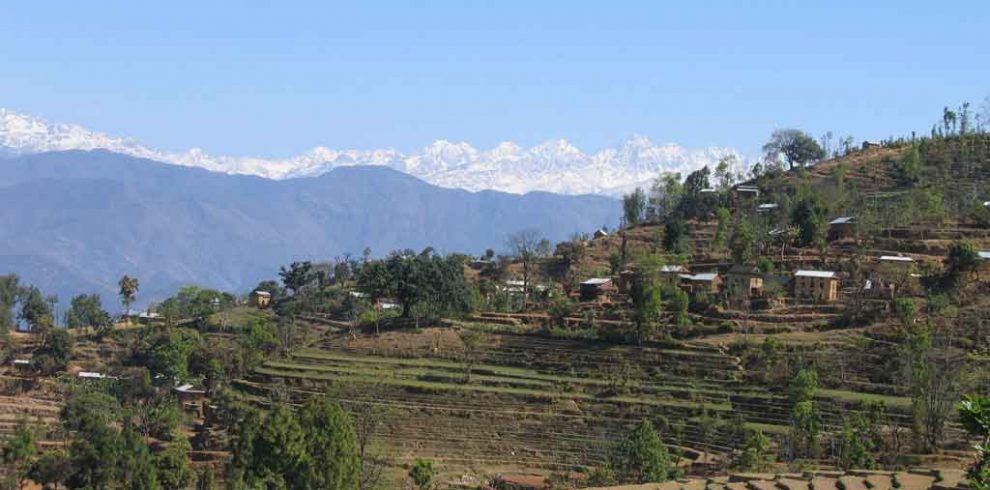Trekking in the Everest region is famous because of the Everest Base Camp trail. Friendly Sherpa people and their lifestyle are the main attractions of the Everest region treks. Their colorful festivals and the Buddhist monasteries make the Everest Panorama trek more interesting. The Everest region consists of the dramatic mountains, glaciers and deep valleys, dominated by the Mount Everest.
Having situated in the Sagarmatha National Park, the Natural World Heritage Site- it is the most concentrated mountain region with over 200 peaks and home to the highest mountains including the majestic Mt. Everest (8,848m/29,028ft). UNESCO has listed SNP as a World Heritage Site in 1979 for its extraordinary natural characters.
We have designed this short Everest trek viewing the need of short time trekkers with limited holidays. They can enjoy with the superb views of the world’s greatest peaks such as Mt. Everest, Lhotse and Ama Dablam. Hence, one of our short treks available is the Everest Panorama view trek.
Brief Itinerary:
| Day | Route | Altitude | Duration |
|---|---|---|---|
| 01 | Fly Kathmandu to Lukla and trek to Phakding | 2,610m/8,563ft | Fly: 35 minutes Trek: 3-4 hours |
| 02 | Trek Phakding to Namche Bazaar | 3,446m/11,306ft | Trek: 5-6 hours |
| 03 | Rest and acclimatisation day in Namche Bazaar | 3,446m/11,306ft | Free time |
| 04 | Trek Namche Bazaar to Thame | 3,820m/12,533ft | Trek: 4-5 hours |
| 05 | Trek Thame to Khumjung | 3,780m/12,402ft | Trek: 3-4 hours |
| 06 | Trek Khumjung to Tengboche | 3,867m/12,687ft | Trek: 4-5 hours |
| 07 | Trek Tengboche to Namche Bazaar | 3,446m/11,306ft | Trek: 4-5 hours |
| 08 | Return trek Namche Bazaar to Lukla | 2,840m/9,318ft | Trek: 6-7 hours |
| 09 | Fly Lukla to Kathmandu | 1,350m/4,430ft | Fly: 35 minutes |
This trek is preferably suitable for family, children and honeymoon couples. The center of attraction of this trek is obviously the Himalayan Panorama of Mount Everest and the adjoining great mountains. The Everest Panorama view trek begins at Lukla, reached with a 35-minute hair-raising scenic flight from Kathmandu.
The ultimate destination of Everest Panorama view trekking is Tengboche Monastery (3,867m/12,894ft) which is over thousand years old. The renowned Tengboche and other monasteries are the common gathering places to celebrate Dumje and Mani Rimdu festivals. Additionally, the Khumjung village is another popular settlement of Sherpa people. Khumjung is the home town of many great Sherpa climbers.
Likewise, the flora and fauna are other jewels of the Everest Panorama trek. Several rare species including the snow leopard and the lesser panda are present in the park. The story of the Yeti in the region is still a mystery to the rest of the world. In conclusion, this trek is a great introduction to Sherpa society, their culture and traditions. It is also a short welcome trip to your next adventure trekking holiday in the region.
Why should I go for Everest Panorama Trek? Because, I
- … do not have longer holidays as other trekkers do
- … want to see the Mount Everest walking on my feet at the shortest time possible
- … am not trained and worried for high altitude treks
- … want to take my children for a short trek and show them the world’s tallest peak
- … wish to enjoy the honeymoon with my spouse on the lap of the Himalayas
- … want to experience the unique Sherpa culture in the Everest region
Best time for Everest Panorama Trek
Trekking in the lower Everest region is possible almost throughout the year. However, the best times for Everest Panorama trek is from the beginning of March to end of May and from the beginning of September until end of November.
The difficulty level of this trek is medium. Trekkers can join this trek without any special physical training. But they should be prepared to walk at least 5-6 hours each day. Regular exercising and jogging for some days prior to the trip can be helpful to your performance.
Extend this trek to Everest Base Camp
This trek requires 9 days and it is possible to reach the famous Everest Base Camp with 3 additional days. After all, the center of attraction in the adventure world is of course the Mount Everest Base Camp. There is nothing to worry about special physical requirements. The views are simply great when you get closer to the mountains. Finally, you may wish to check our Everest Base Camp trek itinerary.
Overview
- Scenic mountain flight to and from Lukla
- The gateway of Everest Base Camp and Sherpa hometown- Namche Bazaar
- Magnificent views of Mt. Everest, Lhotse and Ama Dablam
- Sherpa culture and traditions in Khumjung village
- Enchanting Tengboche monastery
- A perfect blend of fun and adventure











